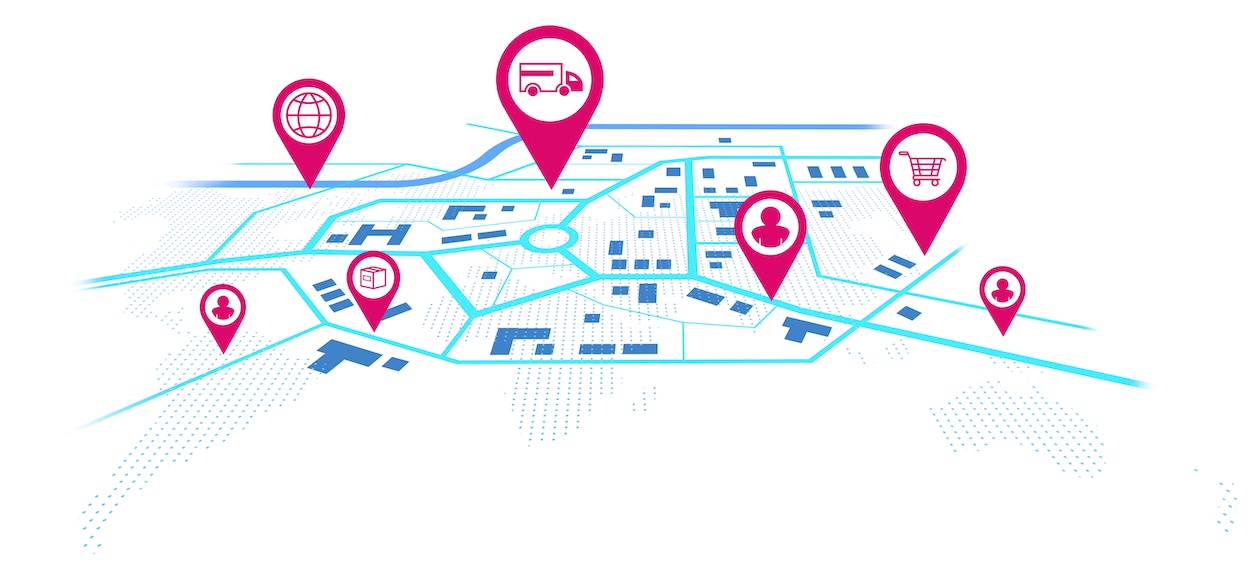Routing may not seem glamorous, but it is one of the most crucial aspects of running a pest control business. How efficiently you plan technician schedules, manage travel times, and balance service intervals directly impacts profitability, customer satisfaction, and even compliance with industry rules.
A company that nails its routing system gets more jobs done in less time, keeps clients happy, meets service requirements, and saves on labor and fuel. A company that gets it wrong risks wasting hours, missing appointments, frustrated customers, and regulatory headaches that can lead to lost contracts.
Routing is more than just drawing lines on a map. It affects every corner of your operations:
When your technicians spend more time on the road than in the field, your business is leaving money on the table.
Even experienced pest control businesses fall into avoidable traps. Here are some of the most frequent mistakes:
Trying to cram too many stops into one technician’s day often backfires. A delayed service in the morning snowballs into late arrivals for the rest of the day. Customers waiting around become frustrated, and technicians feel rushed, which increases the likelihood of errors or missed details in reports.
Manually setting routes without considering traffic conditions is a costly error. Without GPS-powered adjustments, technicians may sit in traffic instead of serving customers.
Many accounts, such as those in food service or property management, require visits at specific intervals. Forgetting or mismanaging these hurts your reputation and can even jeopardize contracts. For a more detailed breakdown, explore the compliance essentials that your pest control software should cover.
Manual planning may work for one truck, but it quickly falls apart as you grow. Without automation, dispatchers waste time, technicians take inefficient routes, and important details, such as cancellations or reschedules, slip through the cracks.
When managers cannot see where technicians are in real-time, small issues can become significant problems. A late start, extended lunch, or wrong turn can throw off the entire schedule without anyone noticing until customers complain.

Inefficient routing is expensive. Here is where the costs show up:
When you multiply these across dozens of routes per week, the financial impact becomes clear.
The best way to avoid these pitfalls is to adopt pest control routing software designed for the industry. Unlike generic mapping tools, these platforms take into account service intervals, technician skills, and customer preferences.
Key benefits include:
When comparing platforms, look for pest control scheduling software that includes:
These features not only keep your routes streamlined but also ensure your customers feel informed and valued.
Fieldster is specifically designed for pest control companies, making it distinct from general pest control software. Its features include:
By combining routing, scheduling, and communication, Fieldster helps pest control businesses avoid the mistakes that cost time and money.
Some businesses attempt to adapt generic software for pest control operations. The problem is that general tools rarely account for service-specific needs, such as industry rules around service intervals or detailed job logging.
Pest control business software, such as Fieldster, offers these industry-specific features out of the box, saving you from costly customizations.
Routing is not just about getting to the job; it's about getting to the job efficiently. It connects directly to invoicing. When service records and job completion are logged in real time:
Fieldster links pest control invoice software with routing, so every service has a clear audit trail.
Routing is just one part of efficient operations. Other valuable tools include:
Fieldster provides these tools within a single system, reducing the need for multiple platforms.
Pest control management software helps business owners see the bigger picture. With dashboards and reports, you can:
For pest control companies seeking sustainable growth, these insights are crucial.
Although the terms sound similar, there is a difference.
Choosing one without the other can leave you with gaps in your workflow. Platforms like Fieldster bring both together.
Pest control is not the only industry where routing matters. Lawn care companies face similar challenges: overbooking, traffic delays, and inefficient routes. By looking at how lawn care businesses optimize scheduling, pest control companies can learn to:
These lessons translate directly to pest control operations.
When comparing pest control software, consider:
Comparing pest control software using these criteria helps you avoid costly mistakes.
To prevent wasted time and money, follow these best practices:
These steps create consistency and efficiency across your team.
Many pest control companies compare FieldRoutes vs PestPac vs Fieldster when evaluating routing solutions.
The choice often comes down to how much customization you need versus how much simplicity you want in daily scheduling.
Tools like Jobber and Housecall Pro attract contractors who do more than pest control, such as HVAC or plumbing. While these systems include scheduling and invoicing, they often lack compliance-specific features, such as chemical usage tracking or service interval reminders.
For pest control companies, that can mean relying on extra spreadsheets. Fieldster eliminates this need by providing pest businesses with everything in one dashboard.
GorillaDesk and OptimoRoute are often chosen by companies looking for affordable, straightforward scheduling tools. They can help reduce mileage and balance technician workloads.
However, they may not offer robust compliance features, customizable reports, or customer communication tools. Fieldster combines routing simplicity with advanced pest-control-specific workflows, making it a more suitable long-term solution for specialized businesses.
Modern pest control apps significantly improve routing efficiency. With mobile tools, technicians can:
Fieldster’s mobile app is more than just a route map; it enables technicians to log chemical use, capture photos as proof of service, and collect electronic signatures in real-time. By tying every step of the job to the route, it reduces paperwork while strengthening compliance.
Routing software should not stop at getting technicians to the right address. It should also help manage tasks like inspections, chemical reporting, customer communication, and invoicing.
By tying these tasks directly to the route, Fieldster ensures technicians never leave a job without completing the right steps.
Routing is not just about saving fuel. It shapes the entire customer experience.
When customers see consistency and reliability, they are more likely to stay loyal and refer others.
Routing and marketing may seem unrelated, but they connect in important ways. Happy customers leave reviews, and efficient scheduling allows for the timely request of those reviews. Some pest control software even automates review requests after service.
Fieldster makes it easy to request reviews immediately after service and follow up with customers during slower months. These built-in notifications serve as a marketing tool, transforming efficient routing into an opportunity to enhance your reputation and secure repeat business.

Even with the best technology, strong fieldwork practices are critical. Routing software should support technicians in the field by giving them the tools to:
Fieldster’s mobile-first design ensures routing decisions actually work in real field conditions.
Pest control companies have many routing options: PestPac, FieldRoutes, Jobber, Housecall Pro, GorillaDesk, OptimoRoute, and Fieldwork. However, for businesses that require software tailored to pest control, Fieldster combines routing, scheduling, invoicing, compliance, and communication into a single platform.
By reducing wasted miles, improving technician accountability, and keeping customers informed, Fieldster provides pest control teams with a streamlined system that reduces reliance on extra tools and manual work.
Efficient scheduling requires more than simply filling slots. Best practices include grouping jobs by geography, setting realistic appointment windows, automating customer notifications, and tracking completion times. If you’re moving customers onto recurring plans, see how selling pest control subscriptions can create predictable revenue while keeping routes consistent.
With pest control technician scheduling software like Fieldster, these steps become part of your daily workflow.
At the end of the day, choosing routing software is not about having the flashiest feature list; it's about finding the right solution for your needs. It is about finding a system that saves you time, reduces costs, and improves the customer experience.
Fieldster is designed specifically for pest control companies. It combines scheduling, route optimization, invoicing, compliance tracking, and customer communication into a single platform. Whether you manage a single truck or multiple teams across regions, Fieldster scales with you.
By investing in the right pest control routing software, you protect your margins, improve your reputation, and build a business that runs smoothly every day.
Pest control routing software is a tool that optimizes technician travel paths, reduces fuel costs, and keeps schedules streamlined. Platforms like Fieldster take it a step further by tying routing directly to compliance and invoicing, providing you with more than just a map.
Scheduling software ensures technicians know exactly where to go and what to do. With Fieldster’s mobile app, they also log service notes, chemical usage, and photos directly from the field, eliminating paperwork while keeping records audit-ready.
The biggest mistakes are overloading schedules, ignoring traffic data, and relying on spreadsheets. Fieldster prevents these issues with real-time GPS tracking, drag-and-drop scheduling, and automated service intervals, ensuring that no appointments slip through the cracks.
Yes. Fieldster automatically links job completion to invoicing, ensuring each service is accompanied by timestamps, technician notes, and photos. This speeds up billing, reduces disputes, and creates a clear audit trail.
Efficiency is achieved by grouping jobs geographically, setting realistic time windows, and sending customers reminders. Fieldster streamlines this process with route optimization, customer notifications, and technician scheduling all in one platform.
Generic systems may cover routing, but often overlook specialized features like chemical tracking and service interval monitoring. Fieldster is designed for pest control, so compliance, customer communication, and technician scheduling are all included without the need for additional tools or add-ons.
Routing apps keep technicians updated on changes throughout the day. Fieldster’s app updates routes in real time, pushes customer ETAs, and ensures service notes are entered on the spot, so managers always know what’s happening.
They can help with basic route planning, but they lack depth in compliance and customer management. Fieldster combines route optimization with subscriptions, invoicing, and compliance tracking, making it better suited for long-term growth.
They’re the most common names in pest control routing software. Fieldster stands out because it’s designed specifically for pest control businesses, offering the same powerful routing as larger platforms but with simpler workflows and a field-friendly mobile app.